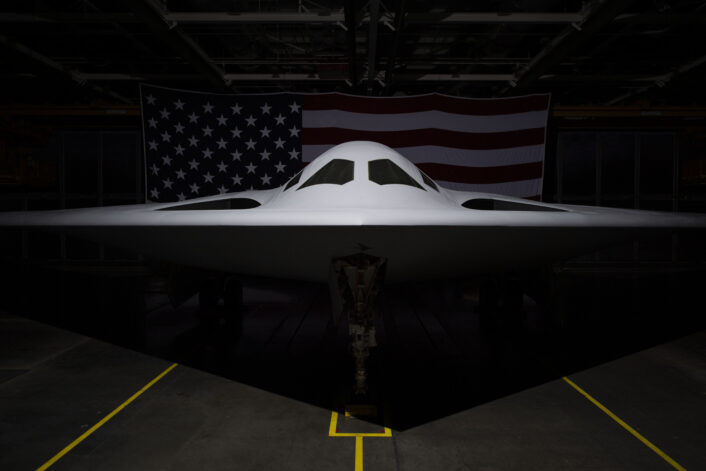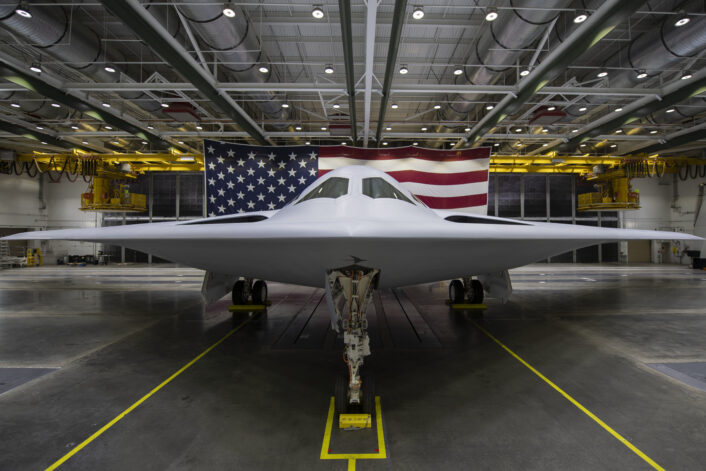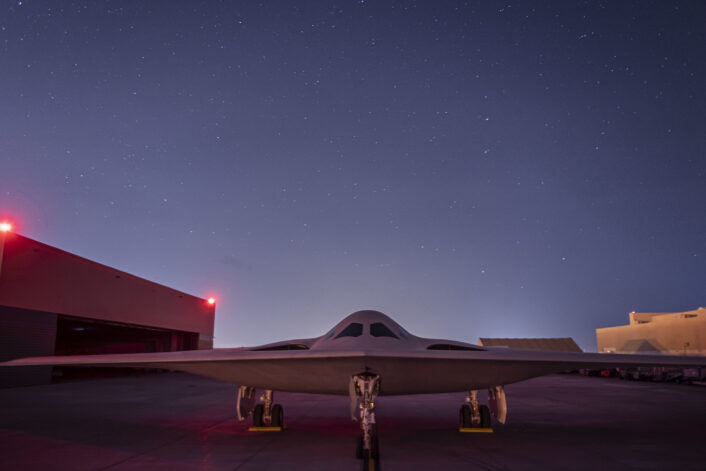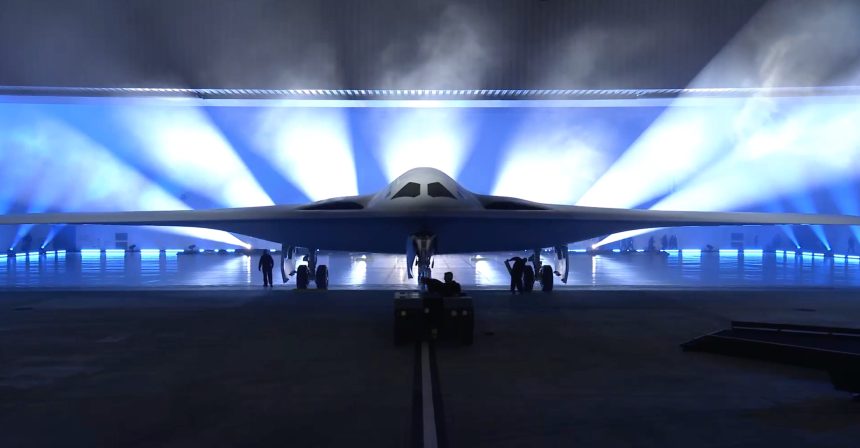The new 6th generation stealth bomber has been unveiled during a ceremony at the company’s site in Palmdale, California.
It finally happened. On Dec. 2, 2022, Northrop Grumman, in partnership with the U.S. Air Force, unveiled the B-21 Raider, U.S. Air Force’s next generation stealth bomber. The event, arranged in the evening, to hide some (most) of the aircraft details, was streamed live on Youtube, making it the first time the rollout of a strategic bomber was broadcast on the Internet for everyone to see.
Destined to replace the B-1 and B-2 fleets, the B-21 that has just been unveiled is not much different from the aircraft teased in the rendering released in the last few years: it is a flying wing just like the B-2 Spirit, and has the same “hawk’s-beak” profile.

Here are some of the main things we noticed (not easy to assess much more and validate some of the assumptions from the frontal view):
- Overall shape is similar to the one of the B-2 but the B-21 is probably smaller in size (not as small as I was expecting)
- We weren’t allowed any side or planform views. While the Raider is believed to be a flying wing like the B-2, the NG photo below and some almost invisible shadows might mean the aircraft has a cranked arrow wing like the X-47B. This is something we’ll discover in the future
- B-21 leading edge shows different design concept than the B-2
- We can’t completely assess the shape of the “hawk’s-beak” profile, although it seems similar to what shown in the latest rendering and less pronounced than the one of the Spirit.
- The B-21 features different inlets config (and blended conformal engine nacelles we can’t see from the front angle). The hd version of the front photo released by the U.S. Air Force reveal a splitter plate in the inlet.
- The B-21 has a two-wheel MLG (Main Landing Gear)
- MLG and Nose Gear doors: MLG doors are not trapezoidal but show serrated edges whereas the nosegear door is serrated and not attached to the gear leg but on the right side of the bay.
- The Raider has a new four-pieces windscreen, like the Spirit, but with a very different shape for the two lateral windows. The side windows appear to be arched and narrower than the ones in the front (about half the height).
- The color is not clear but seems to be a light gray.

Still, most of the Raider’s peculiarities are invisible to an “external inspection”: the B-21 is a “digital bomber”. It was developed using agile software development, advanced manufacturing techniques and digital engineering tools to help mitigate production risk on the B-21 program and enable modern sustainment practices. The Raider has been designed as an Open Architecture, so that new upgrades can be quickly installed (more or less like new Apps and Updates are made available to a smartphone) and leverages a Cloud infrastructure to make it a more maintainable and sustainable aircraft with lower-cost infrastructure.
In 2021, Randall Walden, director of the Air Force Rapid Capabilities Office, said that a first flight in mid-2022 was a “good bet”. Back then, a second B-21 Raider bomber was under construction at Northrop Grumman’s facility at the United States Air Force Plant 42 in Palmdale, California. Currently, at least six examples of the B-21 are under construction at Air Force Plant 42.
First flight should happen in 2023 but when the new bomber will be ready for service it’s still not clear: it was initially expected to enter service around 2026 or 2027, with Ellsworth Air Force Base, South Dakota, being the preferred location for the first B-21 main operating base, and Dyess AFB, Texas, being the alternative, but that timetable might need to be revised.










